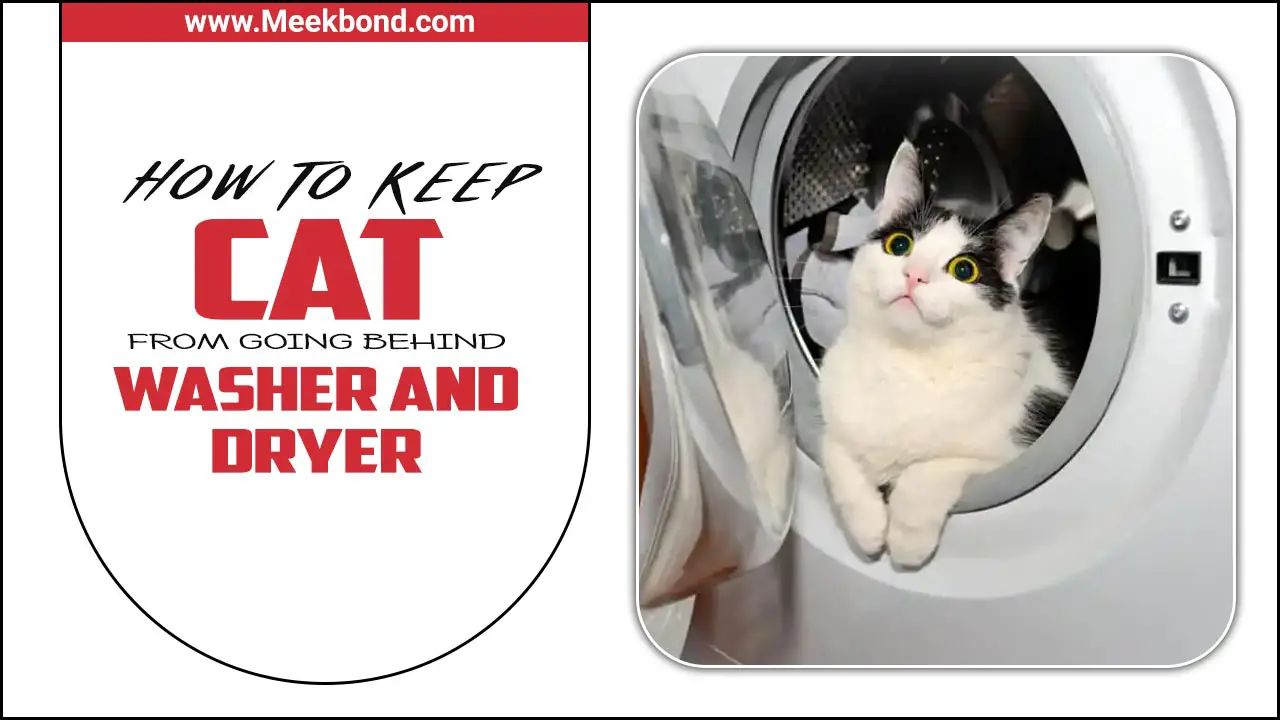Cats are curious and agile creatures that often have a penchant for exploring their surroundings. Cat owners often place their feline companions on bookshelves, seemingly unreachable and content in their lofty position.
However, this behavior can become a nuisance if your cat starts bumping into books, causing damage or, even worse, potentially injuring itself. As a responsible pet owner, finding ways to keep your cat off the bookshelf to provide a safe and harmonious environment for you and your Cats like beloved pets is important.
We will discuss some effective and humane strategies for how to keep cat off the bookshelf. With a few simple steps and patience, you can create a bookshelf free of cat interference and maintain a happy, healthy relationship with your cat.
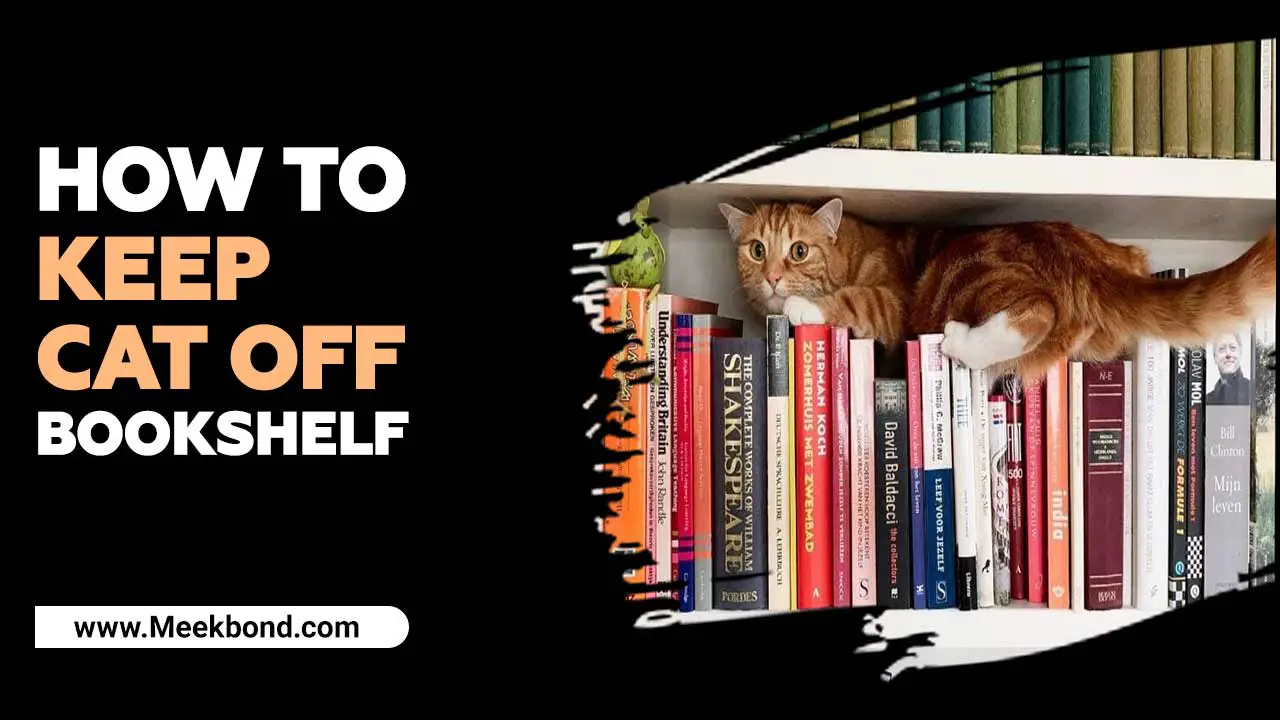
How To Keep Cat Off Bookshelf In 8 Ways
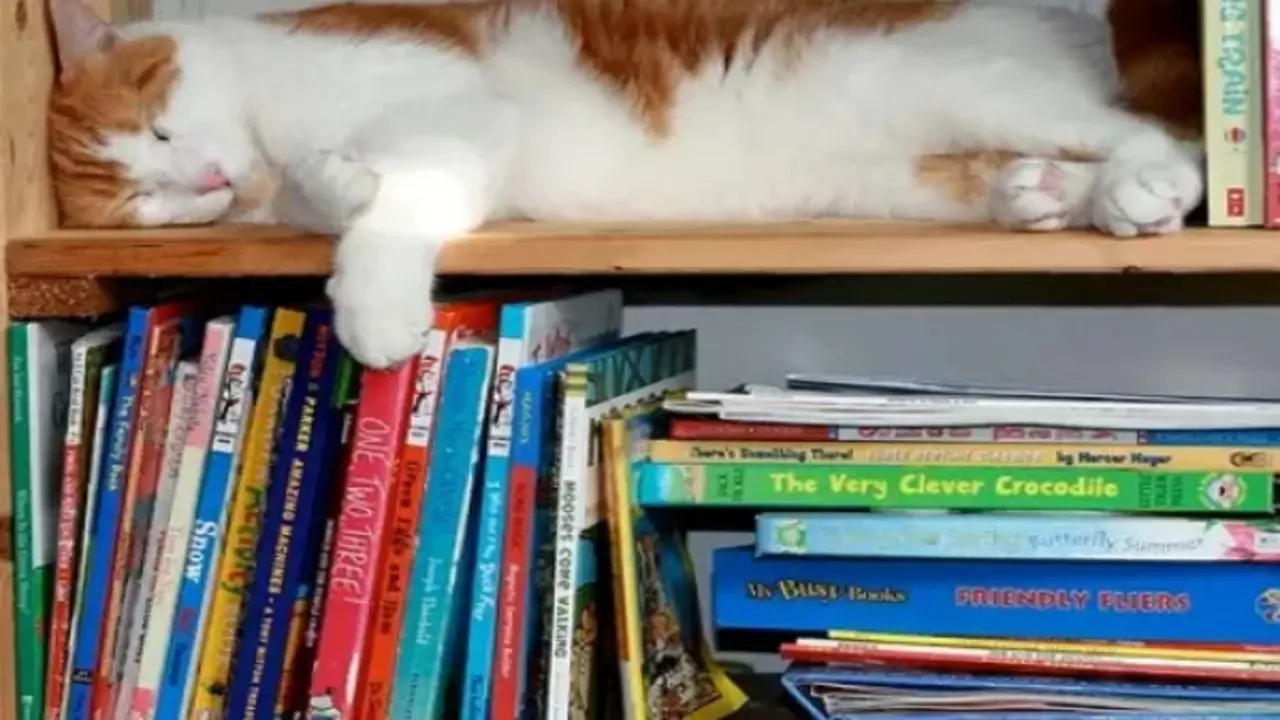
Keeping your cat off the bookshelf can be challenging, but with a few simple strategies, you can create a cat-friendly environment that discourages this behavior. Several simple and effective ways exist to keep your cat hair off the bookshelf. Ensuring the safety of your books and preventing any potential accidents.
By implementing these easy strategies, you can effectively keep your cat off the bookshelf and maintain a harmonious living space for you and your feline friend. Here are some how to keep cat off bookshelf the Easy Way.
1.Provide Alternative Climbing Options
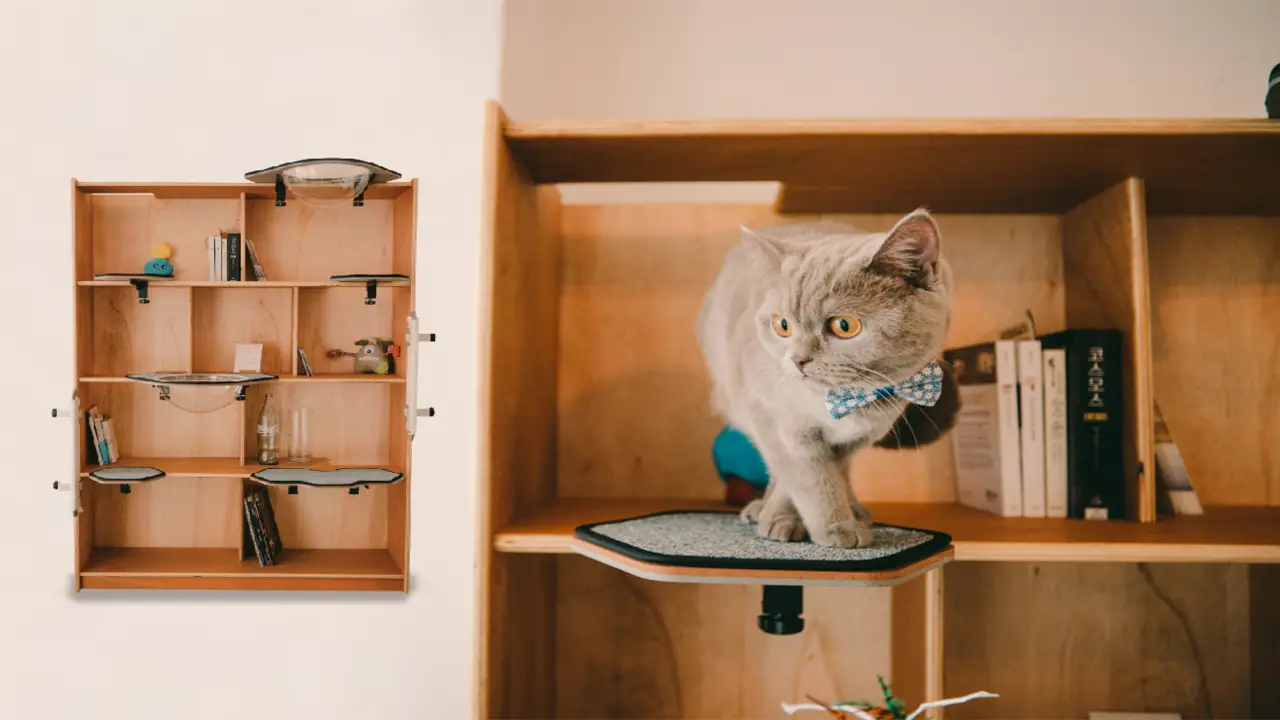
If you’re struggling to keep your cat off the bookshelf, providing alternative climbing options can be helpful. Cats have a natural instinct to climb and explore, so it’s important to give them outlets for this behavior. Consider investing in a sturdy cat tree or scratching post tall enough to satisfy their climbing needs.
Place it near the bookshelf to redirect their attention and provide an enticing alternative. You can also try using deterrents such as double-sided tape or aluminum foil on the bookshelf to make it less appealing for your cat.
2.Use Deterrents
If you’re tired of finding your cat perched on your bookshelf, there are several deterrents you can try to keep them away. One option is to use double-sided tape on the edges of the shelves. Cats typically don’t like the sticky feeling of tape on their paws, so they’ll be less likely to jump up. Another option is to place aluminum foil or plastic wrap on the shelves.
The crinkly sound and strange texture will deter most cats from jumping up. You can also try using a motion-activated deterrent, such as a spray bottle or an air canister that makes a loud noise when triggered. These deterrents can help teach your cat that the bookshelf is off-limits and encourage them to find other places to explore and relax.
3.Create An Obstacle Course
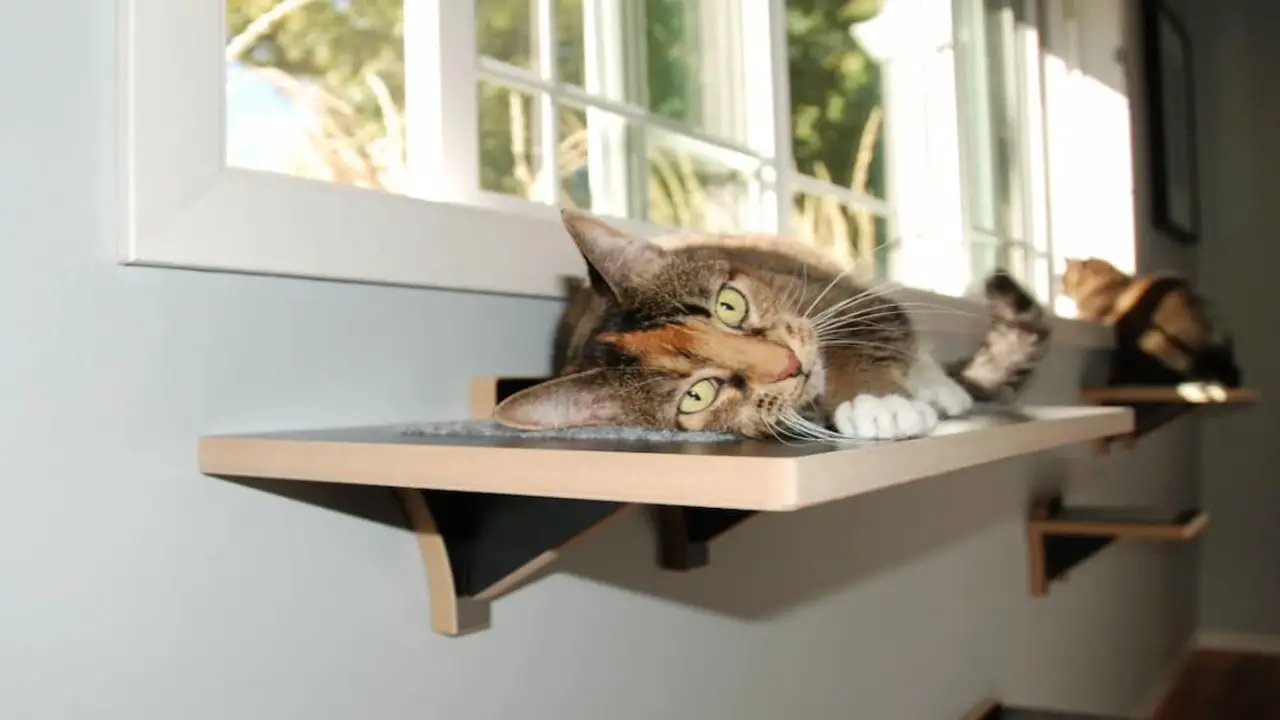
Creating an obstacle course can be helpful if you’re struggling to keep your cat off the bookshelf. Cats are naturally curious and agile creatures, so providing them with alternative activities and challenges can redirect their attention away from the bookshelf.
Start by placing tall scratching posts or cat trees near the bookshelf, as this will give your cat a designated area to climb and explore. You can also sprinkle catnip on these surfaces to further entice them.
Additionally, you can place toys or treat puzzles throughout the room to engage your cat’s mind and keep them entertained. By creating an obstacle course, you’ll not only deter your cat from the bookshelf but also provide them with mental stimulation and enrichment.
4.Make It Unappealing
If you’re tired of finding your cat perched on top of your bookshelf, you can try a few strategies to make it unappealing to them. One option is to use double-sided tape or aluminum foil on the shelves. Cats dislike the texture and will be less likely to jump up. Another option is placing noisy objects on the shelves, such as empty cans or bells.
The noise will startle the cat and discourage them from returning. Additionally, providing alternative high places for your cat, such as a tall cat tree or shelves specifically designed for them, can redirect their attention away from the bookshelf. With patience and consistency, you can train your cat to stay off the bookshelf and keep your beloved books safe.
5.Use Motion-Activated Deterrents
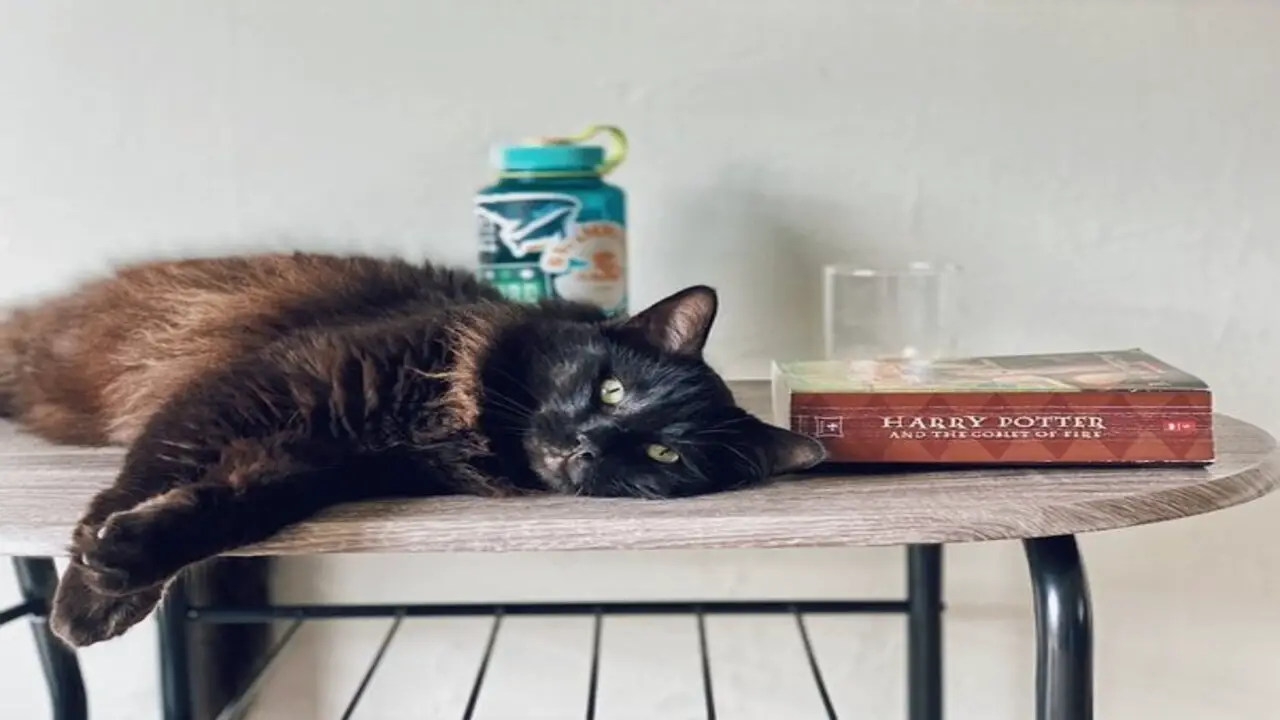
If you’re struggling to keep your cat off the bookshelf, using motion-activated deterrents can be a helpful solution. These devices are designed to detect motion and emit a harmless spray or noise when triggered, effectively deterring your cat from jumping on the bookshelf.
Place these deterrents strategically near the bookshelf to create a boundary your cat will learn to avoid. Over time, your furry friend will associate the bookshelf with the unpleasant experience and will be less likely to venture onto it. It’s important to note that these deterrents should not cause harm or distress to your cat but rather serve as a gentle reminder of where they can roam.
6.Block Access
If you’re struggling to keep your cat off the bookshelf, one effective method is to block their access to it. There are several ways you can do this. One option is to place a baby gate or pet gate in front of the bookshelf, preventing your cat from getting close to it.
Another option is to use furniture barriers or deterrents, such as double-sided tape or aluminum foil, which cats typically dislike walking on. You can also try placing a scratching post or a designated cat shelf nearby as an alternative and more appealing spot for your cat to climb and explore.
By blocking access to the bookshelf and providing alternative options, you can help redirect your cat’s attention and discourage them from jumping onto the shelves.
7.Provide Entertainment
Keeping cats off bookshelves can be challenging, but providing them with alternative sources of entertainment can help redirect their attention. One option is to provide interactive toys or puzzle feeders to keep them mentally stimulated and engaged.
You can also create a designated play area near the bookshelf, complete with scratching posts, climbing structures, and toys to keep your cat occupied. Consider placing deterrents near the bookshelf, such as double-sided tape or aluminum foil, which cats typically dislike walking on.
By providing entertainment and redirecting their attention, you can help discourage your cat from jumping onto the bookshelf and protect your precious books from curious paws.
8.Reinforce Positive Behavior
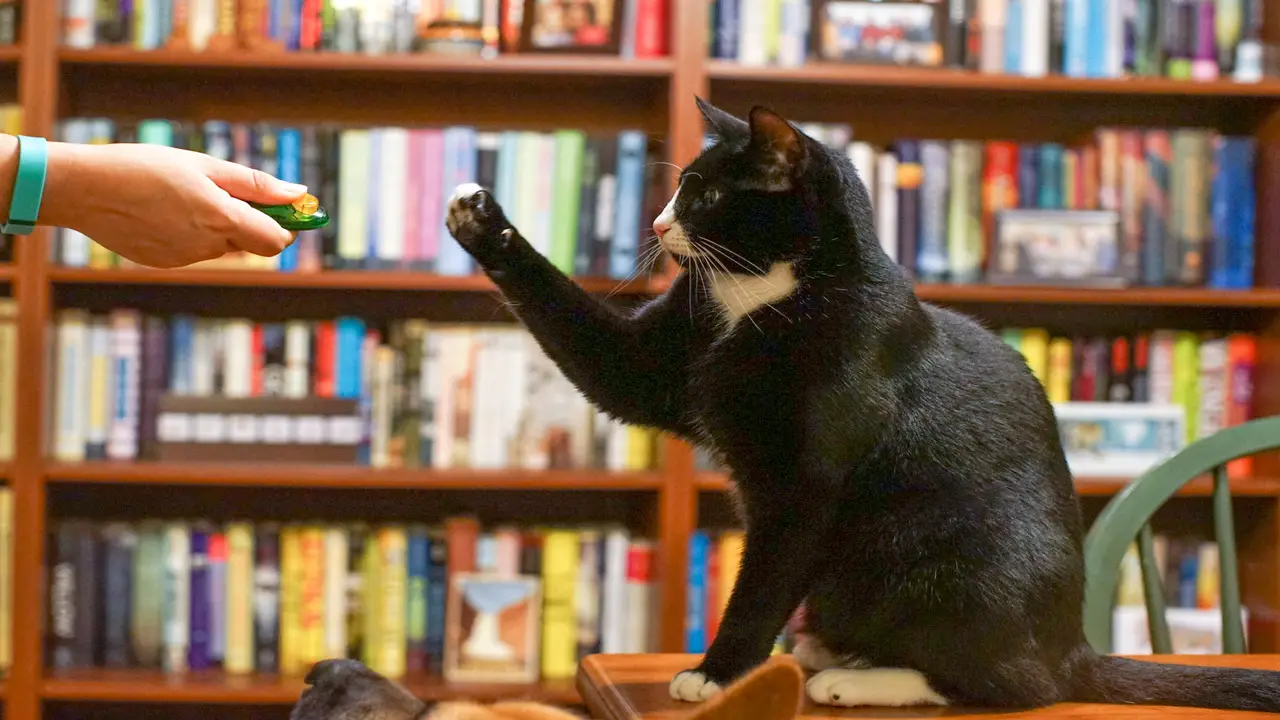
Reinforcing positive behavior is an effective strategy for keeping your cat off the bookshelf. Cats are naturally curious creatures, so providing them with alternative outlets for their curiosity and energy is important. Set up a designated area for your cat with toys, scratching posts, and comfortable resting spots.
Whenever you see your cat using this area instead of the bookshelf, reward them with praise and treats. Additionally, make the bookshelf unappealing to your cat using deterrents such as double-sided tape or aluminum foil on the shelves. With consistent reinforcement and redirection, you can train your cat to stay away from the bookshelf and protect your books and furry friend.
How Can You Cat-Proof Your Bookshelf?
Cats are notorious for their curiosity and love for climbing. If you have a bookshelf at home, it’s essential to cat-proof it and ensure your feline friend’s and precious books’ safety. Here are some tips on how to cat-proof your bookshelf:
- Clear The Lower Shelves: Cats are natural jumpers and climbers. To prevent them from accessing your books, remove any items from the lower shelves that may entice them, such as plants, toys, or cozy blankets.
- Use Deterrents: Cats dislike certain scents, so you can use them to your advantage. Spraying a cat-safe deterrent, such as citrus or vinegar, on the bookshelf can discourage your cat from approaching it.
- Secure The Shelves: Cats love to explore tight spaces. To prevent them from squeezing behind your books and causing a mess. Consider adding bookends or securing the shelves to make them less accessible.
Methods To Stop A Cat From Jumping On Bookshelves
To prevent your cat from jumping on bookshelves, try using deterrents like double-sided tape or aluminum foil on the shelves, as cats dislike the texture. You can also provide alternative vertical spaces for your cat to climb, such as cat trees or wall-mounted shelves.
Additionally, make sure to provide plenty of mental and physical stimulation for your cat to discourage excessive jumping and climbing behaviors. Here are some methods to stop a cat from jumping on bookshelves:
- Redirect Your Cat’s Climbing Instinct
- Secure The Bookshelf to The Wall
- Using Double-Sided Tape
- Loud Noises
- Organizing Your Bookshelves
Why Your Cat’s Jumping Onto Your Bookshelf?

Cats may jump onto bookshelves for a variety of reasons. They may be seeking a high vantage point to observe their surroundings, escaping from other pets or children, or simply exploring out of curiosity. Providing alternative vertical spaces for climbing, such as cat trees or shelves specifically designed for cats, can help redirect their behavior and keep them entertained.
- Easier to See More of Their Environment
- Getting Away From Another Pet
- Keeps Your Cat Out of Reach
- Staying Warm
Why Are Bookshelves Dangerous If They Are Not Secure?
Bookshelves, if not securely fixed to the wall, can pose a significant risk to both individuals and their surroundings. To mitigate these risks, it is essential to ensure that bookshelves are securely fastened to the wall using appropriate hardware.
Regular inspections and maintenance should also be conducted to identify any signs of instability or damage. Understanding why bookshelves can be dangerous when not properly secured is crucial. Here are some key points to consider:
Stability: Bookshelves that are not securely anchored to the wall can easily tip over. Especially if they are top-heavy or overloaded with books and other items, this instability can lead to serious injuries, especially if young children or pets are nearby.
Falling Objects: When a bookshelf topples over, it can cause all the items on its shelves to crash. Heavy books, decorative objects, or even electronics can pose a risk of injury to anyone in close proximity. Moreover, falling objects can damage furniture, flooring, or other valuable possessions.
Structural Damage: Bookshelves that are not securely attached to the wall can cause significant damage to the surrounding structure. The force exerted by a falling bookshelf can cause cracks in walls, ceilings, or even floors. These damages may require costly repairs and compromise the overall safety of the building.
Fire Hazards: In the unfortunate event of a fire, unsecured bookshelves can become obstacles that impede evacuation routes. They can also collapse, blocking exits and hindering the efforts of firefighters.
Additionally, if flammable materials, such as books or papers. They are stored on shelves, and they can contribute to the rapid spread of fire. By taking these precautions, we can create a safer environment and prevent potentially life-threatening accidents.
Why Does Your Cat Jump On Your Bookshelf & Climb?
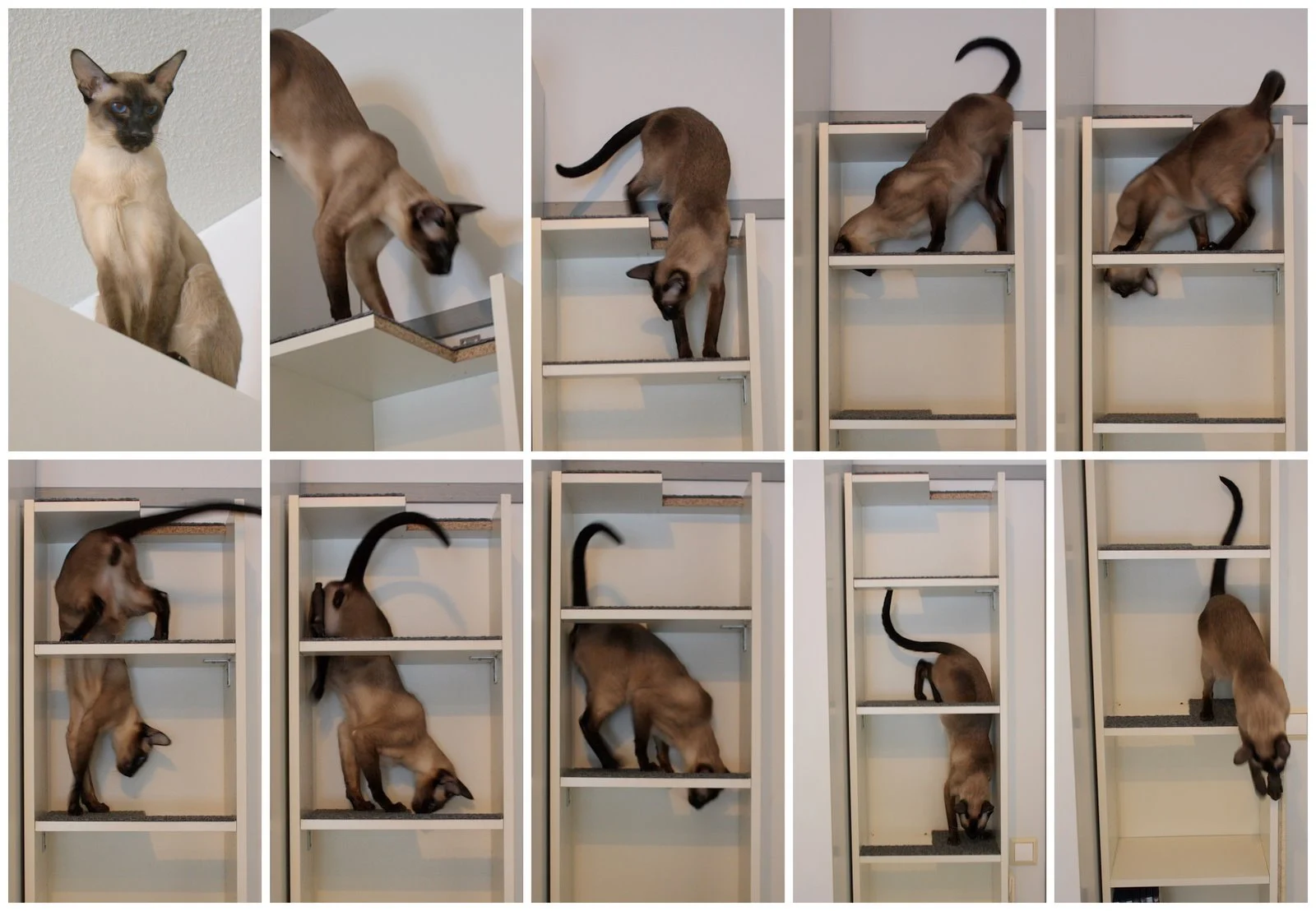
Have you ever wondered why your beloved feline companion has an insatiable urge to climb on your bookshelf? Cats are fascinating creatures known for their curious and playful nature. Understanding their behavior can help us better comprehend the motives behind their actions. Here are a few reasons why your cat may engage in this particular behavior:
- Heightened Curiosity: Cats are naturally curious beings and are drawn to exploring their surroundings. The bookshelf, with its various objects and shelves, presents an intriguing vertical playground for them to investigate.
- Seeking A Vantage Point: Cats instinctively seek elevated positions as a means of surveillance. Climbing the bookshelf allows them to observe their territory from a higher vantage point, providing a sense of security and control.
- Exercise And Stimulation: Climbing is a form of physical exercise for cats, helping to keep them fit and agile. Scaling the bookshelf allows them to engage their muscles, providing both physical and mental stimulation.
- Territory Marking: Cats have scent glands in their paws, and jumping on your bookshelf leaves their scent to mark their territory. This behavior reassures them of their place in the household hierarchy.
To address this behavior, consider providing alternative vertical spaces for your cat, such as a cat tree or specially designed shelves. These alternatives can redirect their climbing instincts and provide a dedicated space for them to explore.
Additionally, ensure that your bookshelf is secure and stable to prevent any accidents or damage to your belongings. By understanding and accommodating your cat’s natural instincts, you can create a harmonious environment that promotes their physical and mental well-being.
What You Will Need To Deter Your Cat From Your Bookshelf
In order to effectively deter your cat from accessing your bookshelf, there are a few key items that you will need to have on hand. By implementing these strategies, you can create a harmonious living space where your books can remain safe and undisturbed. Here is a list of essential tools and techniques:
- Cat Repellent Spray: This specially formulated spray emits a scent that cats find unpleasant. Discouraging them from approaching or climbing on the bookshelf. It is important to choose a cat-friendly repellent that contains no harmful chemicals.
- Sticky Tape: Applying double-sided sticky tape along the edges and surfaces of your bookshelf can deter your cat from jumping or climbing on it. Cats dislike the sticky texture and will quickly learn to avoid the area.
- Elevated Perch: Providing an alternative elevated spot for your cat, such as a cat tree or shelf, can redirect their attention away from your bookshelf. Cats enjoy having a high vantage point. And offering them a designated space makes them less likely to venture onto the bookshelf.
- Interactive Toys: Engaging your cat in playtime with interactive toys can divert their attention and energy away from the bookshelf. Toys that stimulate their natural instincts, such as feather wands or puzzle toys, can be particularly effective in keeping them entertained.
- Positive Reinforcement: Rewarding your cat with treats or praise when they choose not to engage with the bookshelf can reinforce positive behavior. This positive reinforcement technique encourages cats to seek out alternative activities and helps to establish a clear boundary between them and the bookshelf.
How Do You Train A Cat To Stay Off The Table?
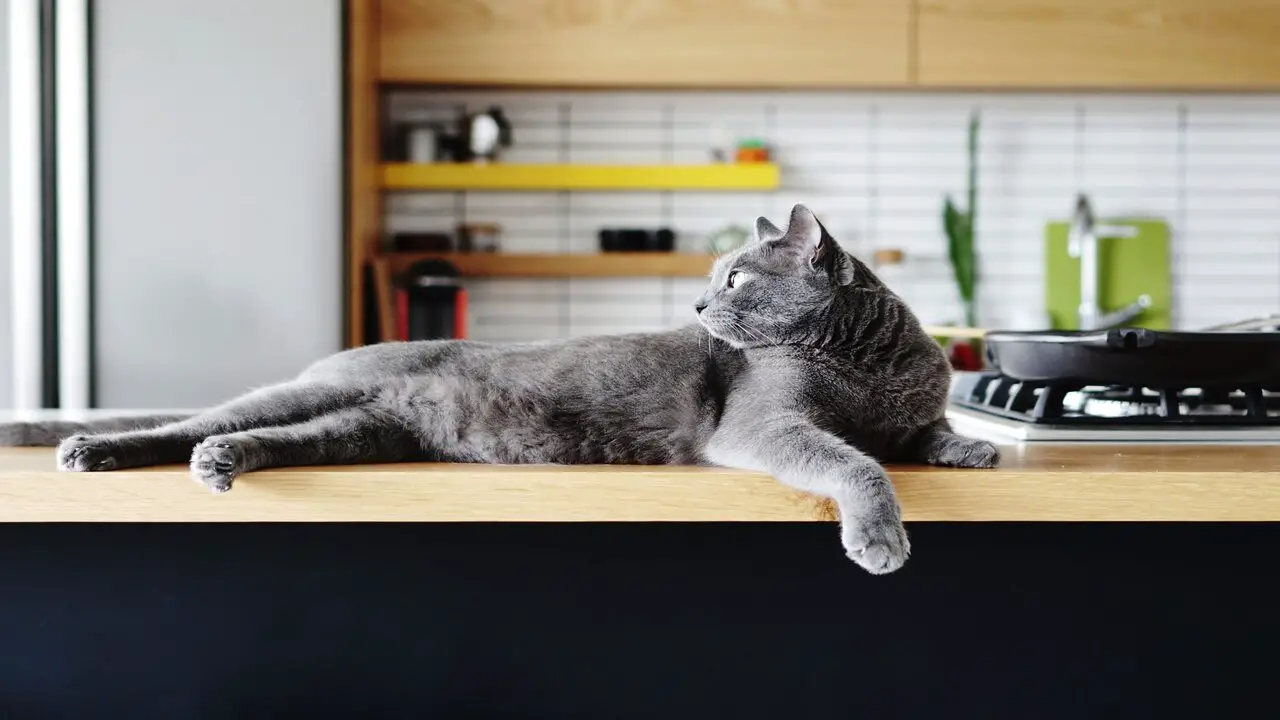
Training a cat to stay off the table can be challenging, but it is possible with some patience and consistency. One effective method is to use a deterrent, such as the smell of food or a slippery surface. Cats are sensitive to certain scents, so placing citrus-scented items on the table can discourage them from jumping up.
Additionally, you can try using double-sided tape or aluminum foil on the table surface, as cats generally dislike the texture. It’s important to provide alternative spaces for your cat to perch and play, such as a cat tree or designated scratching posts.
Rewarding your cat with treats and praise when they choose to stay off the table can also reinforce positive behavior. With time and training, your cat will learn to respect boundaries and stay off the furniture.
Conclusion
One optimistic reason to know how to keep a cat off a bookshelf is that it promotes a safe and organized living bookshelves environment for both you and your furry friend. Keeping your cat off the bookshelf may seem daunting, but with patience and consistency, it is achievable.
By implementing the strategies discussed, such as providing alternative climbing options and using deterrents, you can create a safe and enjoyable environment for both you and your feline friend.
Remember to be understanding and kind towards your cat, as they may simply be curious or seeking attention. With love and a bit of training, you can maintain a harmonious relationship with your cat while also keeping your bookshelf intact.
Frequently Asked Questions
DO CATS LIKE CAT SHELVES?
Many cats enjoy cat shelves, providing them with an elevated space to observe their surroundings, rest, and play. The opportunity to climb and perch on a cat shelf mimics their natural instinct to be in high places, making them feel more secure and in control of their environment.
Why Can Cats Survive High Falls?
Cats can survive high falls uniquely due to their flexible bodies and keen sense of balance. When cats fall, they can twist their bodies mid-air, which helps them land on their feet. Their flexible skeletal structure, specifically their spine and collarbone, allows them to absorb the impact of the fall more effectively. Additionally, their small size and relatively low weight contribute to their survival.
Is It Ok To Spray Cat With Water?
Yes, spraying a cat with water as a training or disciplinary measure is generally acceptable. However, using a gentle spray and not directing it towards the cat’s face is important, as this can be distressing or harmful.
How Do You Get Your Cat To Obey You?
Understanding their behavior and using positive reinforcement techniques is important for your cat to obey you. Reward your cat with treats or praise when they exhibit desired behaviors, such as coming when called or using the litter box.
Are Cat Wall Shelves Safe?
Cat wall shelves can be safe if properly installed and designed with the cat’s safety in mind. It is important to ensure that the shelves are securely mounted to the wall, using appropriate hardware, to prevent them from falling or collapsing. The shelves should also be made of sturdy materials supporting the cat’s weight.

Aquarium passion is all about connecting with the aquatic life and providing education to the public on the importance of these creatures. We showcase a wide variety of marine life through our exhibits as well as working with schools to provide unique learning opportunities for students of all ages.




